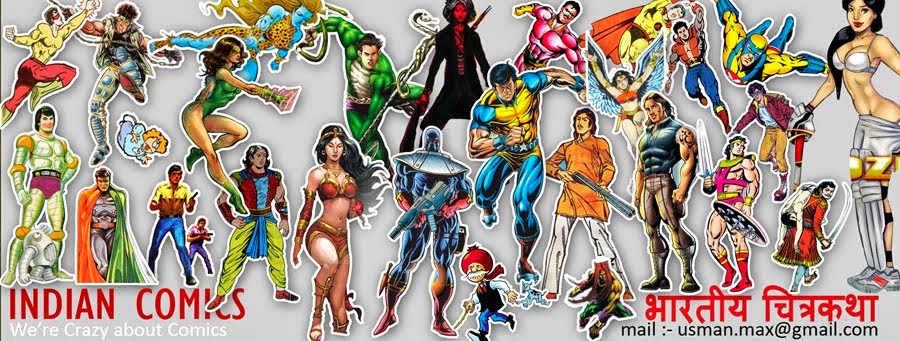'Fairest' heroine jumps from Indian epic to comic page
New story arc introduces Nalayani, a character from the sacred text of the 'Mahabharata'
Sean E. Williams read the Mahabharata so you don't have to.
In his biggest splash in the comic-book industry to date, the writer takes a heroine from the Indian Sanskrit epic poem and puts her in the central role of a new story arc in Vertigo Comics' series Fairest, a spinoff of creator Bill Willingham's long-runningFables.
Like Snow White, Cinderella and Rose Red in the main book that brings fairy-tale icons to modern day, Nalayani is a strong female character introduced in Fairest issue 15 (available Wednesday digitally and in comic shops), featuring art by Stephen Sadowski and Phil Jimenez.
Set in the Indu, an India-esque locale in the Fablesuniverse that has featured characters from Rudyard Kipling works, the new story line begins with Nalayani's village under attack and on the cusp of outright collapse. She goes on a journey to find the local Maharaja and ask for his help to save her and her people.
"She's basically the de facto leader of her village so it's hardened her more than she probably ever wanted to be," Williams says of Nalayani, armed with courage as well as a bow and arrow.
An important aspect of the story is actually something Willingham came up with, according to Williams: The vast majority of the men from the Indu are gone because they ventured off to battle the Adversary, the major baddie in Fables lore, and were killed in the process.
"There aren't any men of adult age so we have old men and teenagers now who have grown up into manhood from back then, so there's this big gap in the gender dynamic," Williams says. "Nalayani had to step up and lead her village because no one else does.
"I like to think of her as one of those characters who rose to the occasion when she needed to be the leader. She fell right into it and it came to her naturally."
While the new Fairest tale revolves around Nalayani and the Maharaja, there will be appearances from fan favorites — "Some we've seen before, some we haven't," Williams teases — and the writer promises that "whoever survives the arc" will tie eventually back into the main Fables series.
Williams, who also writes the digital series Artful Daggers for Monkeybrain Comics, originally met Willingham at a San Diego Comic-Con shortly after Fables debuted in 2002. At the time, Williams was working in TV and film and approached Willingham about the rights, which the Jim Henson Co. had at the time.
He then took a look at Willingham's larger catalog, fell in love with his Vertigo graphic novel Proposition Player, wrote a TV pilot for it and shopped it around. Then three years ago, Williams pitched the Fables writer on a underutilized character for a stand-alone story like the two Cinderella miniseries, but instead shifted to Nalayani and the Maharaja.
As it turned out, Williams was a big fan of India after seeing its sights as a tourist.
"Just seeing all the colonial British raj architecture that's still there, a lot of it is abandoned and decaying, so there's vines and trees growing up in it, right next to a skyscraper being built," Williams says. "That kind of dichotomy just latched on and actually ties into the story a little bit with the whole Kipling Fables being in the same universe as the characters from Hinduism."
He wasn't able to actually find a full copy of the Mahabharata, which clocks in at 1.8 million words and is about 10 times longer than the Iliad and the Odyssey combined. Williams did read three different condensed versions of it, though, and he found they gave him a surprising bit of creative wiggle room.
"The thing with Hinduism, and with the Mahabharata in particular, is that there's no one version of it — to the point that who the good guy is in the Ramayana actually changes depending on what part of the country you're in," Williams says.
With Nalayani, "a lot of the bullet points were all the same but then what happened in between and how she got there changed. We're doing a retelling within the arc of her story so that's kind of exciting, too."
What surprised Williams the most was that, even thousands of years ago, she's the protagonist of her tale, he says. "She's a very active character and she's the one making the decisions and she's the one driving the story, so that was really exciting and refreshing."
The biggest difference between Nalayani and the Fables characters mined from tales familiar to Western audiences is that she's from a sacred Hindu text that people believe and worship, much like the Bible.
"Having that element to it adds an importance in my mind," Williams says. "It's not something I can play around with willy-nilly — you've got to give it the due respect that it deserves."

No comments:
Post a Comment